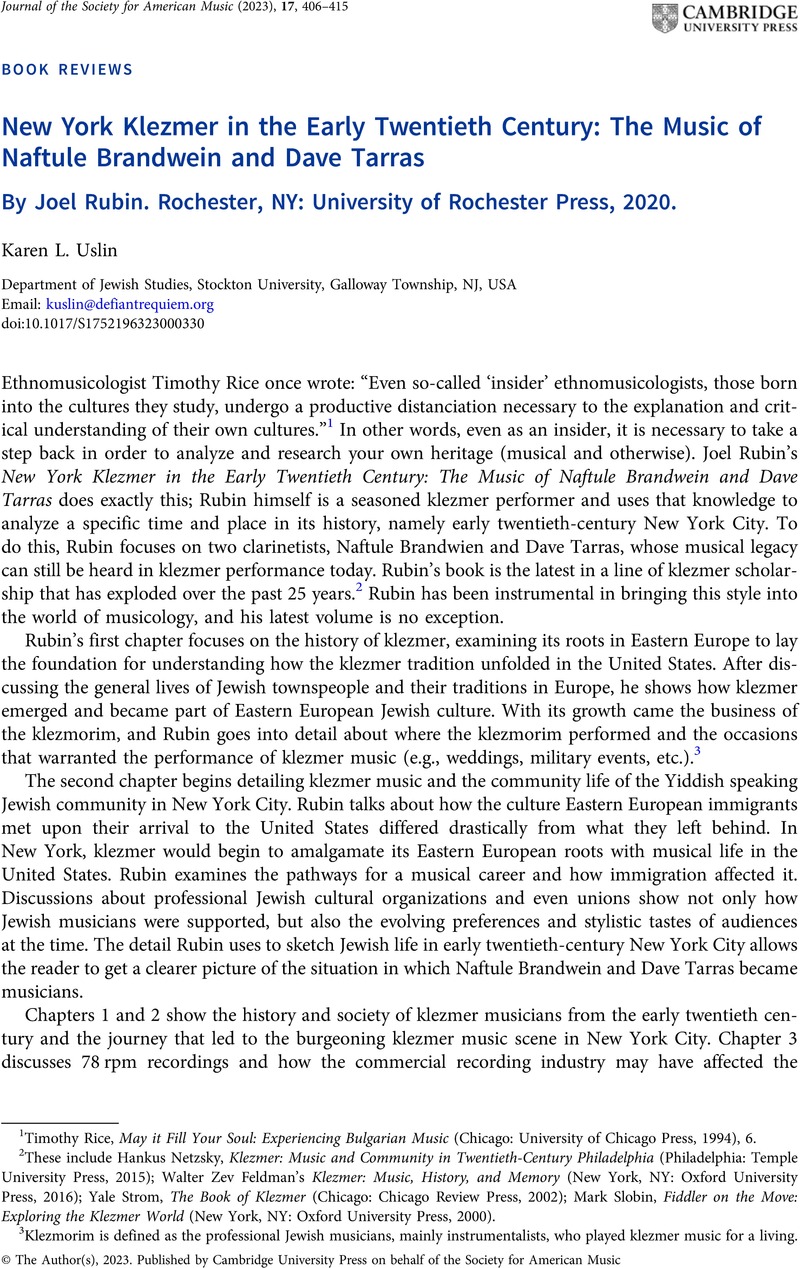No CrossRef data available.
Article contents
New York Klezmer in the Early Twentieth Century: The Music of Naftule Brandwein and Dave Tarras By Joel Rubin. Rochester, NY: University of Rochester Press, 2020.
Review products
Published online by Cambridge University Press: 16 November 2023
Abstract

- Type
- Book Review
- Information
- Copyright
- Copyright © The Author(s), 2023. Published by Cambridge University Press on behalf of the Society for American Music
References
1 Rice, Timothy, May it Fill Your Soul: Experiencing Bulgarian Music (Chicago: University of Chicago Press, 1994), 6Google Scholar.
2 These include Netzsky, Hankus, Klezmer: Music and Community in Twentieth-Century Philadelphia (Philadelphia: Temple University Press, 2015)Google Scholar; Feldman's, Walter Zev Klezmer: Music, History, and Memory (New York, NY: Oxford University Press, 2016)CrossRefGoogle Scholar; Strom, Yale, The Book of Klezmer (Chicago: Chicago Review Press, 2002)Google Scholar; Slobin, Mark, Fiddler on the Move: Exploring the Klezmer World (New York, NY: Oxford University Press, 2000)Google Scholar.
3 Klezmorim is defined as the professional Jewish musicians, mainly instrumentalists, who played klezmer music for a living.


